Denemek ALTIN - Özgür
Painted Worlds
Archaeology
|September/October 2017
Searching for the meaning of self-expression in the land of the Moche

THE COVER OF THE AUTUMN 1951 issue of ARCHAEOLOGY features a dramatic scene of close combat between two men, teeth bared, faces bright red with exertion, garments flying, pulling each other’s hair so violently that each grips the ripped-out forelock of his foe. Created by the artist Pedro Azabache, this cover is a replica of a wall painting at the site of Pañamarca on the northwest coast of Peru, done very shortly after the work’s rediscovery. Mural A depicts a contest between Ai-Apaec, the mythological hero worshipped by the Moche culture, which flourished in this region between about A.d. 200 and 900, and his twin or double. Although Pañamarca’s impressive ruins on a granite outcropping in the lower Nepeña River Valley were well known in the first half of the twentieth century, and had been described by travelers in the late nineteenth century, only a few articles about the site had been published and very little had been said about its wall paintings. Thus, when American archaeologist Richard Schaedel arrived there in 1950, he believed that any paintings he might find would be fragmentary at best. Once there, however, he soon found that Pañamarca’s adobe structures had been completely covered in polychrome murals. In a single week—originally planned for five days, the trip was extended when more murals and a group of burials were discovered—Schaedel and his five-person team not only recorded the combat scene, but also discovered new murals of what he identified as a large cat-demon and an anthropomorphic bird. On the walls of a large plaza, they documented a 30-foot-long composition showing a procession of warriors and priests wearing a costume with knife-shaped back flaps known to have been part of Moche sacrificial rituals.
Bu hikaye Archaeology dergisinin September/October 2017 baskısından alınmıştır.
Binlerce özenle seçilmiş premium hikayeye ve 9.000'den fazla dergi ve gazeteye erişmek için Magzter GOLD'a abone olun.
Zaten abone misiniz? Oturum aç
Archaeology'den DAHA FAZLA HİKAYE
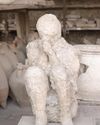
Archaeology
LEGEND OF THE CRYSTAL BRAIN
When most people envision the victims of the eruption of Mount Vesuvius in A.D. 79 that destroyed the cities of Pompeii and Herculaneum, they think of the casts of their bodies made by pouring plaster into voids left by their decaying corpses. Yet not all the physical remains of those who perished in the cataclysm decayed. In one case, a remarkable transformation occurred—a man’s brain turned to glass.
3 mins
July/August 2025
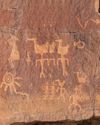
Archaeology
Birds of a Feather
Intriguing rock art in the Four Corners reveals how the Basketmaker people drew inspiration from ducks 1,500 years ago
8 mins
July/August 2025
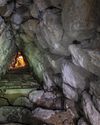
Archaeology
THE HOME OF THE WEATHER GOD
In northern Anatolia, archaeologists have discovered the source of Hittite royal power
13 mins
July/August 2025
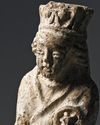
Archaeology
SAINTS ALIVE
Since 2019, archaeologists have been excavating in Berlin's oldest square, known as the Molkenmarkt, or Whey Market.
1 min
July/August 2025
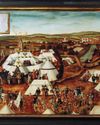
Archaeology
SOLDIERS OF ILL FORTUNE
The Schmalkaldic War, which began in 1546 and lasted less than a year, pitted the forces of the Holy Roman emperor Charles V (reigned 1519-1556) against the Schmalkaldic League, a Protestant alliance formed by German principalities and cities within the empire.
1 mins
July/August 2025
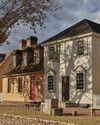
Archaeology
A NEW LOOK AT AN OLD CITY
Archaeologists are reconstructing the complicated 400-year history of Virginia's colonial capital
13 mins
July/August 2025
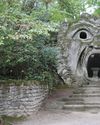
Archaeology
ITALY'S GARDEN OF MONSTERS
Why did a Renaissance duke fill his wooded park with gargantuan stone
10 mins
July/August 2025
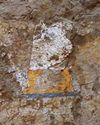
Archaeology
In Search of Lost Pharaohs
Anubis Mountain conceals the tombs of an obscure Egyptian dynasty
3 mins
July/August 2025
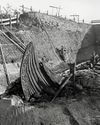
Archaeology
Setting Sail for Valhalla
Vikings staged elaborate spectacles to usher their rulers into the afterlife
15 mins
July/August 2025
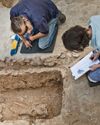
Archaeology
BOUND FOR HEAVEN
During excavations of a Byzantine monastery in 2017 just north of Jerusalem's Old City, a team led by Israel Antiquities Authority archaeologists Zubair 'Adawi and Kfir Arbiv discovered an unusual burial in a crypt beneath the altar of the complex's church.
1 mins
July/August 2025
